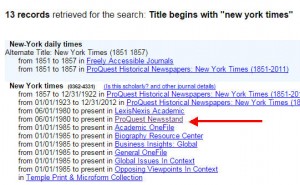A group of people, who are locals and not students, continuously come to the library and have loud conversations that disturb everyone’s peace. They stand in groups and talk for hours, ignoring the students who are trying to get work done. I’m not sure why the staff here lets people without student IDs in. We pay a fortune to go here and it’s not fair for us to be disturbed by people who don’t pay to go here and aren’t even supposed to be allowed in the library to begin with.
Thank you for sharing your concerns about noise in the library. Our goal is to provide our students with the best possible study space, so we do pay attention to noise issues.
But let me first clarify what appears to be a misunderstanding on your part. Temple University Libraries is open to the public. We invite all community members to use our Library. So everyone is allowed to be in the Library, not just those with a currently valid Temple ID card. Those who do not have a Temple ID must show a form of photo identification and sign in with the door guard. It is part of Temple University’s mission to serve the public and the surrounding communities, and Temple Libraries supports that mission.
That said, we do expect everyone who comes into the Library, Temple student or otherwise, to abide our Library Code of Conduct, which asks for all patrons to be respectful of other and to maintain a quiet environment. You can find it here: (and we have it posted at our entrances)
https://library.temple.edu/about/policies/code-conduct-library-users
So what can you do when students are being noisy and disturbing your ability to have a peaceful, quiet study space?
First, make sure you are actually in one of the Library’s quiet zones. If you’re trying to find quiet in one of our noise tolerant areas, such as the first floor west or the second floor east, you really can’t blame others for talking. We have a guide to all the quiet, study areas in the Libraries:
http://guides.temple.edu/study-spaces
Second, what if you are in a designated study space and other people (whether it is students or otherwise) are making noise and disturbing you? Consider politely reminding them they are in a quiet zone and that if they wish to talk to go to a noise tolerant space in the library. If you don’t feel comfortable doing that, you can ask a staff member to do that for you. Depending on the time of the day, for example, late evenings, we may only have staff at the Tuttleman service desk. There are red phones on each floor that can be used to call that desk directly. Staff members will intervene as needed.
Research has shown (yes, librarians have actually done research on what contributes to and helps prevent noise in libraries) that the most effective way for noise to be controlled is for patrons who want to keep things quiet to self-police and remind others that the library is a quiet space for study – and especially is areas designated for quiet study.
If patrons, Temple students or otherwise, continue to be noisy and refuse to move to another space, they will be in violation of our Library Code of Conduct and will we deal with that accordingly.
Sorry that you had a bad experience here, and we hope that you are able to find a better, more quiet space in the Library that suits your needs.
Steven Bell
Associate University Librarian
Temple Libraries



